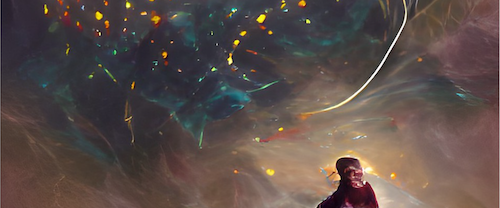We used hydrodynamical zoom-in simulations to describe the geometry, collapse and feeding of clusters via filaments and groups, and to determine the histories of observed cluster galaxies. We created an inventory of galaxies in filaments feeding clusters; a combination of group-, backsplash- and pure filament galaxies, to compare pre-processing signatures to. Almost all galaxy groups become...
The outskirts and infall regions of galaxy clusters act as the points of contact linking the large-scale structure of the Universe to the dense virialized cores of the clusters. In these regions, the underlying dark matter density field manifests itself as the cosmic web, making them crucial in understanding the mass assembly processes of the Universe. Our work involves forecasting the...
To study the cosmic web, surveys are designed to acquire a large quantity of spectral and multi-wavelength imaging data. To be fully understood and exploited, these data must be analyzed in combination with advanced cosmological simulations. Ideally the latter must be first calibrated at z=0 with extremely faithful numerical counterparts of the local, best known, cosmic web. I will introduce...
Nonlinear gravitational collapse shaped the cosmic web and created a plethora of different density environments. To realise the full potential of galaxy surveys, we need to dissect different densities that are lumped together in 2-point statistics. This is particularly important for LCDM extensions including massive neutrinos, dark energy and modified gravity. I will show how to extract...
Next-generation data sets promise 1% cosmology, but 1% predictions from simulations are expensive to build likelihood approximations and inference frameworks. Instead of intensive simulations, we can use approximate solvers, or surrogates, which introduce model error with respect to the simulations, which translates into biased and underestimated confidence bounds on cosmological parameters....
The distribution of matter in the universe depicts a complex spatial pattern commonly referred to as the Cosmic Web in which massive nodes are linked together by elongated filaments found at the intersection of thin mildly-dense walls, themselves surrounding large and empty voids. Classifying, in simulations, the particles belonging to the several environments depending on level of local...
Lyα forest provides a unique probe of studying IGM matter distribution at high-z & upto small scales. While its 2-point clustering statistics have been studied widely, higher-order statistics remain largely unexplored. In addition to probing non-gaussianity in the density fields, they can also complement 2-point statistics in constraining cosmological & astrophysical parameters. In this talk,...

